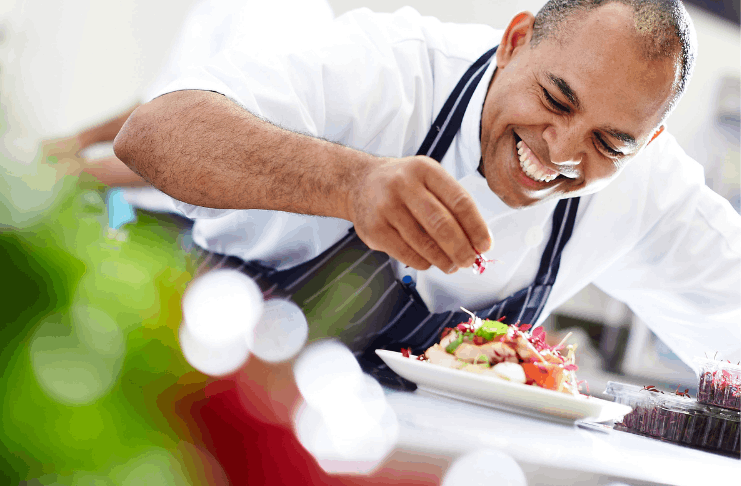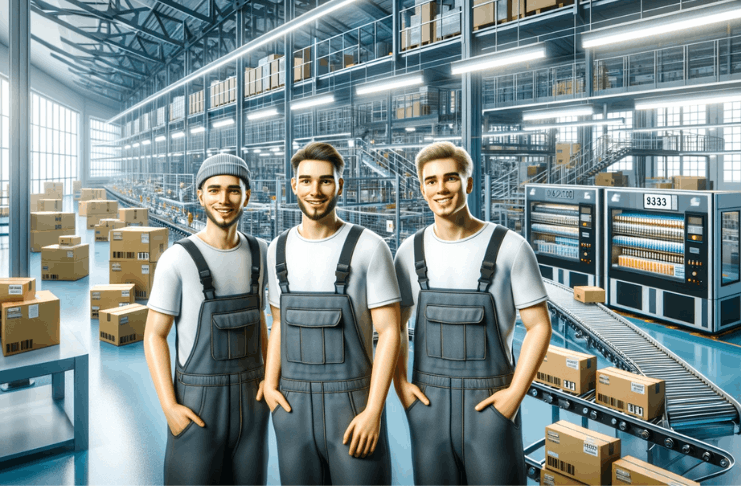Gig jobs are key for flexible work and fast cash. Deliveroo food delivery jobs let you earn on your schedule.
This article explains how Deliveroo’s platform works, earning potential, and the benefits of joining as a rider. Understanding these aspects helps you decide if this fast-paced gig suits your lifestyle.
What is Deliveroo?
Deliveroo food delivery service connects restaurants to customers through an app. It allows people to order meals and have them delivered quickly.
Riders pick up food from restaurants and bring it to the customer’s location. The platform uses a simple ordering system for convenience.
It operates in multiple countries, offering a steady flow of deliveries. Customers track orders in real time.
How the Business Model Works?
This platform works as a middleman between customers, restaurants, and riders. It relies on independent contractors for food deliveries.
How Does It Work for Riders?
The app assigns deliveries based on location and demand. Riders accept or reject orders using their smartphones.
They pick up food from restaurants and follow the app’s route to the customer. Payments are based on distance, time, and peak hours.
Some areas offer higher pay due to demand. Tips add extra income.
Comparing It to Other Delivery Services
Many apps work in a similar way, but each has differences. Some offer hourly pay, while others rely only on per-delivery earnings.
Some services allow cash payments, while others use only online transactions. Rider benefits and incentives vary by company.
Order volume and demand depend on the city. Customers may find prices and wait times different across platforms.
Starting as a Rider
Getting started is simple, but a few steps are needed. Riders must meet basic requirements and have the right equipment.
What You Need to Apply?
Applicants must meet certain conditions to work as a rider. These requirements vary by location but generally include:
- Minimum age (usually 18 or older)
- Valid ID and right to work in the country
- A smartphone to use the app
- A bike, scooter, or car (depending on the city)
- A bank account for receiving payments
- Some areas may require insurance or background checks
Equipment and Setup
Riders need the right gear to work safely and efficiently. The required items depend on the type of vehicle used.
- Bike or scooter in good condition
- Helmet for safety (often required)
- Insulated delivery bag to keep food fresh
- Phone mount for easy navigation
- A portable charger to keep the phone powered
- Reflective clothing for visibility at night
Flexibility of Work
Riders can set their own schedules and work as much or as little as they want. Shifts depend on demand, making it a flexible way to earn.
Choosing Work Hours
Riders log in to the app and start accepting orders when they want. There are no fixed shifts, allowing full control over working hours.
Peak meal times offer more deliveries and better pay. Late nights and weekends also bring higher demand.
Those who work during busy hours tend to earn more. Flexibility makes it easy to balance this job with other commitments.
How Location and Timing Affect Jobs
Job availability depends on the area and time of day. Cities with high restaurant density have more orders.
Suburban areas may have longer wait times between deliveries. Lunch and dinner rush hours bring steady work and better pay.
Slower hours may lead to fewer jobs, reducing potential earnings. Knowing the best times and places to work helps maximize income.
Earning Potential
Riders earn based on completed deliveries, not hourly wages. Pay varies by location, time, and distance traveled.
How Payments Work?
Each delivery pays a base fare plus extra for distance and time. Peak hours offer boosted rates for high demand.
Riders keep 100% of their tips. Some locations provide extra incentives for completing a set number of deliveries.
Payments are sent weekly or on demand in certain areas. Longer routes and multiple-order deliveries increase overall pay.
Average Earnings in Different Cities
Earnings vary depending on demand and delivery distances. Here’s what riders typically make in different locations:
- London, UK – Around £10-£15 per hour
- New York, USA – About $15-$25 per hour
- Sydney, Australia – Roughly A$20-A$30 per hour
- Paris, France – Typically €12-€18 per hour
- Berlin, Germany – About €10-€16 per hour
These numbers change based on work hours, weather conditions, and promotions.
Tips to Earn More
Maximizing earnings requires strategy. Here are some ways to increase income effectively:
- Work during peak hours – Lunch and dinner times have more orders.
- Choose busy areas – High-demand zones mean steady deliveries.
- Accept stacked orders – Completing multiple orders at once boosts pay.
- Provide fast service – Better ratings lead to more jobs.
- Track promotions and incentives – Extra bonuses help increase earnings.
- Use a fuel-efficient vehicle – Saves money on expenses.
Benefits and Perks
Riders get access to useful perks that improve their work experience. Some benefits depend on location and time worked.
Health Insurance and Eligibility
Some regions offer insurance coverage for riders. Here are common options:
- Accident insurance for injuries during work.
- Medical coverage in select locations.
- Income protection for unexpected time off.
- Third-party liability insurance in case of accidents.
- Eligibility depends on local laws and the number of deliveries completed.
Other Perks and Discounts
Riders can save money through various deals. These include:
- Bike and scooter discounts on select brands.
- Phone plan savings with partnered providers.
- Exclusive fuel discounts for car and scooter riders.
- Special restaurant deals for riders.
- Cashback offers on gear and maintenance.
Challenges of the Job
This work offers flexibility but comes with difficulties. Riders must handle challenges on the road.
Physical Demands and Risks
Riding for hours requires stamina and endurance. Long shifts can cause fatigue, especially in busy areas.
Traffic and road conditions add safety risks for riders. Accidents and injuries are possible if precautions are not taken.
Impact of Weather on Work
Bad weather makes deliveries harder and riskier. Rain and snow affect visibility and road safety.
High temperatures can cause exhaustion and discomfort. Riders need proper gear to stay safe in all conditions.
Future of Deliveroo and Gig Economy
The gig economy is growing fast, with more people choosing flexible jobs. Food delivery trends are shifting with technology.
Food Delivery Industry Trends
More people rely on fast and easy meal delivery. Demand is rising in urban areas, leading to higher order volumes.
Subscription plans and loyalty rewards are attracting customers. Businesses are investing in faster and smarter delivery solutions.
How Technology Affects Riders?
New tech is changing how deliveries work. AI and smart routing improve efficiency and pay rates.
Electric bikes and eco-friendly options are becoming more common. Automated delivery systems may reduce rider demand in the future.
Last Takeaways on Deliveroo Food Delivery Jobs
Deliveroo food delivery jobs provide flexible work with decent earning potential. Riders set their schedules and make money based on demand.
While the job has challenges like weather and safety, the benefits help balance it out. Future advancements in the gig economy may improve conditions or create new obstacles.












